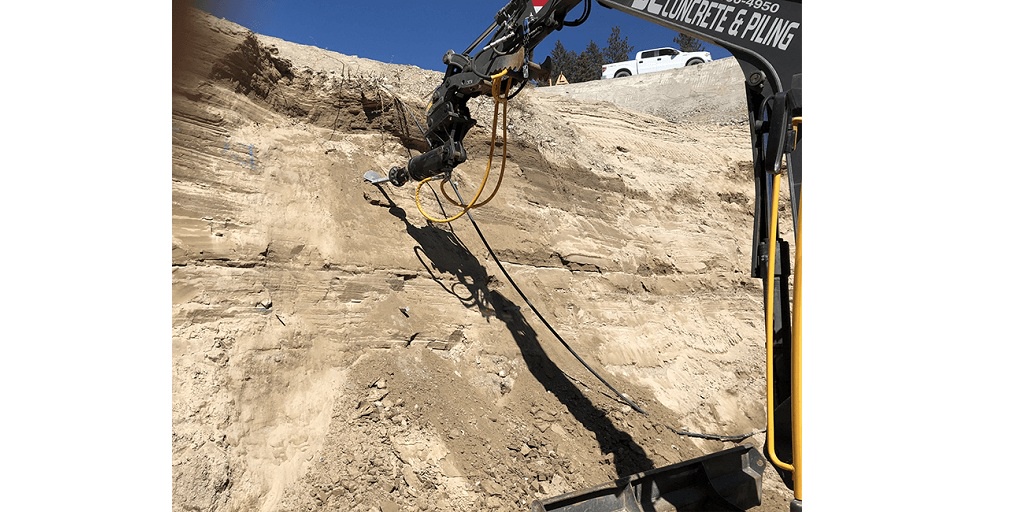Pile foundations serve as the backbone of any structure, providing the essential support and stability needed to ensure that it can withstand the test of time. These robust foundations are constructed by driving piles deep into the earth's surface, effectively creating a solid base on which to build.
With the ever-evolving engineering industry, the range of pile foundations available today is vast and varied. From steel piles to concrete piles, and everything in between, the possibilities are endless. In this article, we'll delve into the most commonly used pile foundations along with their pros and cons.
What Are Pile Foundations Used For?
Pile foundations are deep foundations that are used to increase the stability of a structure in areas where the soil is unsuitable and weak. They are also employed to raise buildings in flood plains and to make sure that piers and retaining walls are securely fastened and anchored so that they can resist storms and waves.
Common Types of Pile Foundation
Pile Foundations can be classified into different categories. Here, we discuss in detail the most common ones in use today.
End Bearing Pile
These piles, often referred to as point-bearing piles, are used to transmit superstructure load from a weak stratum, such as rock or extremely dense sand and gravel, to a strong stratum with a higher bearing capacity. You will see their application in high-rise structures, bridges and water tanks.
Pros
- Low settlement compared with other types of pile
- Commonly available
- Possible to have them pre-cast
- Does not experience buckling failure in weak soil
- Cost-effective
Cons
- Heavy and specialised equipment is required
- Probability of causing “negative skin friction”
Concrete Pile
As the name suggests, concrete piles are made up of concrete as their material base. To support offshore structures like bridges, oil rigs, and floating airports, concrete piles are frequently employed as structural foundation components.
There are primarily three different types of concrete piles, namely, post-tensioned piles, driven or precast piles, and cast-in-situ bored piles.
Pros
- Great quality
- Easy mobility and transportation
- Installation is easy
- Easy maintenance
- Durability and longevity
Cons
- Extremely heavy, therefore requires specialised equipment
- Brittle in nature, therefore caution needs to be observed when being transported and carried
- Increasing the length of the pile once it has been built is impossible (as per the site demand)
- Challenging and expensive to cut the pile if the length is discovered while driving.
Steel Pile
Steel piles are precast piles that are drilled into the earth to support loads. They are frequently employed in piling foundations, cofferdams, retaining walls, port harbours, bridge construction, and other places where the earth is soft and dense.
Pros
- Outstanding environmental performance
- Easy to handle
- Longer piles can easily be produced.
- Tailored to each structure
- Strong bending resistance
- Easy jointing with superstructures
Cons
- High likelihood of electrolysis and corrosion damage.
- Somewhat costly unless the bearing stratum can generate a significant pile capacity.
- Ineffective compared to friction piles.
Driven Pile Foundation
Driven piles, which are also referred to as displacement piles, are installed to a specified depth or level of resistance using impact or vibration hammers. They are a type of frequently-used building foundation that supports structures by dispersing their weight among soil or rock layers with enough bearing capacity and proper settlement characteristics.
Pros
- Extremely cost-effective.
- increased carrying capacity due to soil displacement and compaction.
- Enhanced productivity if piles are produced off-site.
- Foundation engineering solution as its whole.
Cons
- Pile construction must be reinforced for transport if it is done off-site.
- Installation must be planned and prepared in advance.
- To construct piles, overhead space is required.
- The installation noise makes it unsuitable for metropolitan locations.
Contact Atlas Piling and Drilling Inc if you wish to know more about different types of pile foundations and to ascertain the best one for your project. They are one of the most reliable and prominent Piling Services in British Columbia, offering top-notch piling and drilling services to their customers.
For More Information about Best Drilling Company and Best Underpinning Services Please Visit: Atlas Pilling


No comments yet